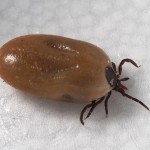Nothing in HIV Makes Sense Except in Light of Evolution
Today, the 1st of December marks World AIDS day. A day designed to raise awareness of those 37 million people infected with HIV (and the potential for that number to grow) and this year aims to end Isolation, Stigma, and Transmission, under the umbrella of a ‘right to health’. This day is one of 9… Continue reading




